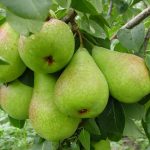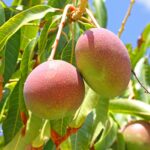Agronometrics in Charts: Berry imports and organic strawberry production exhibit sustained growth - USDA

Berry imports in the U.S. are surging, and organic strawberry production is ramping up, outpacing the growth of conventional strawberries, according to a comprehensive report released by the USDA.
The report, titled "The Changing Landscape of U.S. Strawberry and Blueberry Markets: Production, Trade, and Challenges from 2000 to 2020," spans 38 pages and offers a deep dive into the transformations witnessed in domestic production, consumption, prices, and trade dynamics for strawberries and blueberries over the past two decades.
Authors of the report note, “This study helps explain how the major berry markets evolved in a short time and examines opportunities and challenges these markets face."
According to the report, organic strawberry acreage in California, responsible for over 75% of domestic organic production, saw a remarkable threefold increase between 2008 and 2019. Secondly, imports of fresh highbush blueberries showed a remarkable surge, constituting approximately 62% of the domestic fresh blueberry market. The introduction and adoption of high-yielding strawberry varieties led to a notable boost in total domestic production, all while requiring less acreage.
Over the last two decades, fresh strawberry imports, particularly from Mexico, experienced significant growth. In 2020, the U.S. witnessed a record high of 431 million pounds of fresh strawberries imported from Mexico. Notably, nearly 85% of these Mexican shipments entered the market during the winter and spring months.
The U.S. primarily exports strawberries for fresh-market consumption, with Canada being a significant destination. Fresh strawberry exports saw a remarkable 94% increase in volume during 2018-20 when compared to the period from 2000-20. These insights from the USDA report illuminate the dynamic changes taking place in the U.S. berry industry.
As demand for organic strawberries rises, and international trade continues to play a crucial role in the supply chain, it is evident that the berry market is evolving rapidly, presenting both opportunities for growers and consumers alike.















 Source: USDA Market News via
Source: USDA Market News via Source: USDA Market News via
Source: USDA Market News via Source: USDA Market News via
Source: USDA Market News via Source: USDA Market News via
Source: USDA Market News via






























